I was in need of a small respite, so I planned a quick (and easy!) trip. I chose Washington D.C. for a few reasons:
- It was far enough to feel like more than a day trip
- It was close enough that I could keep the trip short and still feel worthwhile
- I could take a train (from Philadelphia), meaning the travel itself could be part of the break (driving can be stressful and never feels like part of the enjoyment)
- There’s a high density of museums (Smithsonian)
- … and all the Smithsonian museums are free!
I wanted to focus on this being a restorative trip so I limited what I brought with me; obviously clothes/toiletries in a small suitcase shared with my wife, and a small travel over-the-shoulder sling with my Kindle, a Retroid, my Light Phone, and an old pocket-able point and shoot digital camera.
Also keeping with the focus on being restorative, I knew that that getting in and out of Philly can be a challenge and I’d need to find a place to park my car for a few days, so I opted to establish Lansdale Station as the official point of departure. There’s a newer parking garage there which is currently “free until further notice”.
Traveling to DC
From Lansdale Station it was an easy ride on SEPTA into Philly, dropping us off right at 30th Street Station (which is absolutely beautiful and a nice place to wait in) to pick up Amtrak down to Washington on the Northeast Regional.
From there we hopped on DC Metro to get to our hotel. I chose Hilton Washington DC National Mall The Wharf since it was connected to DC Metro and had an incredible location (walking distance!) between The Wharf and The National Mall with all the Smithsonian Institution museums.
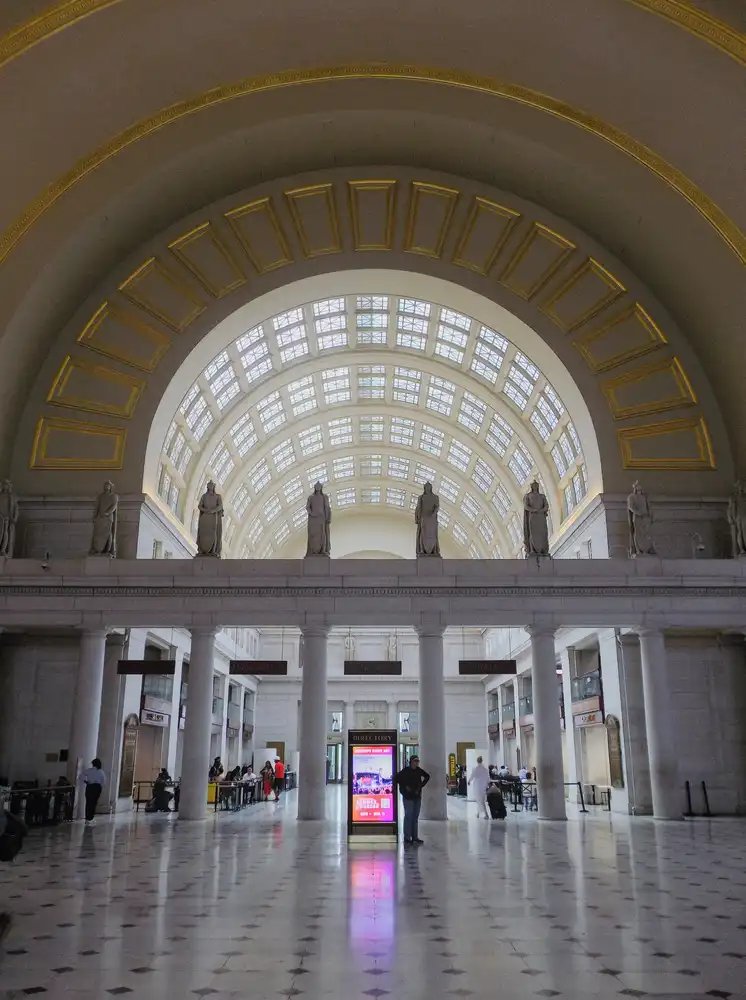

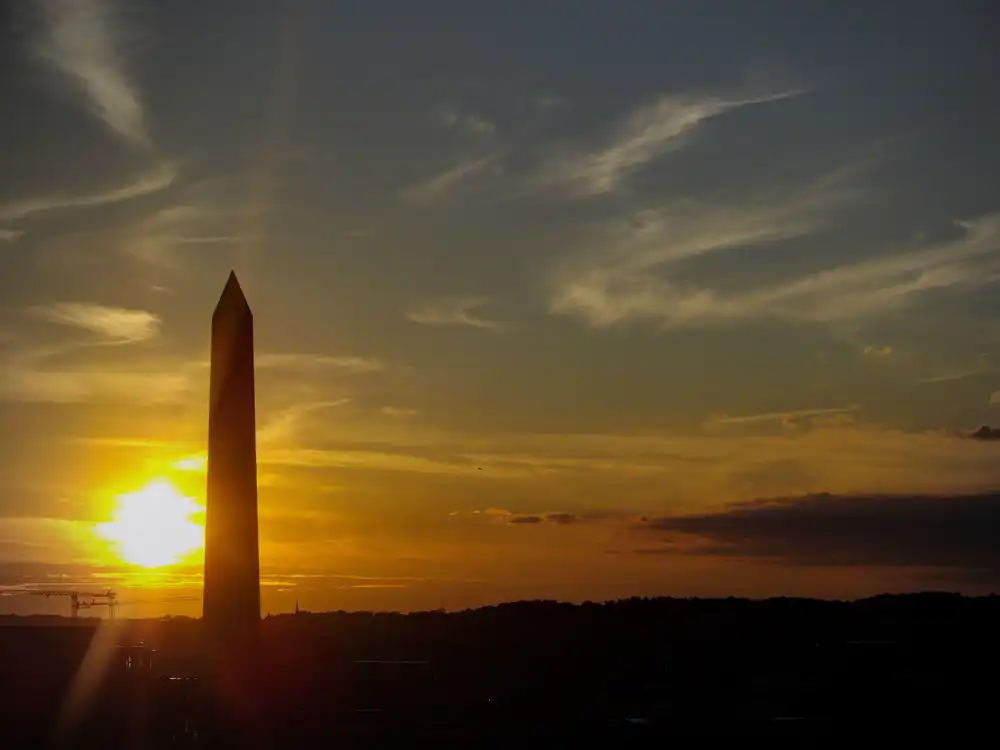
The ride down was smooth and relaxing. I loved “just being” the entire time. This was by far the most relaxing travel experience I’ve had in ages, if not ever. I spent some time talking with my wife, some time watching people, and a lot of time reading a very introspective book: The Highly Sensitive Person.
Exploring some of Washington D.C.
After we checked in at the hotel we decided to venture out since my wife wanted to visit a local yarn shop and I was happy just being away. I brought my Kindle and went along for the ride, happily reading while my wife browsed a few shops.
When I previously wrote about using the Light Phone one of my issues was with the Directions tool. Since then, Light made quite a few improvements and added a Directory tool to find local establishments which came in quite useful. While I was waiting I found Sauf Haus, a German bier hall and garten to check out for some quick refreshments:
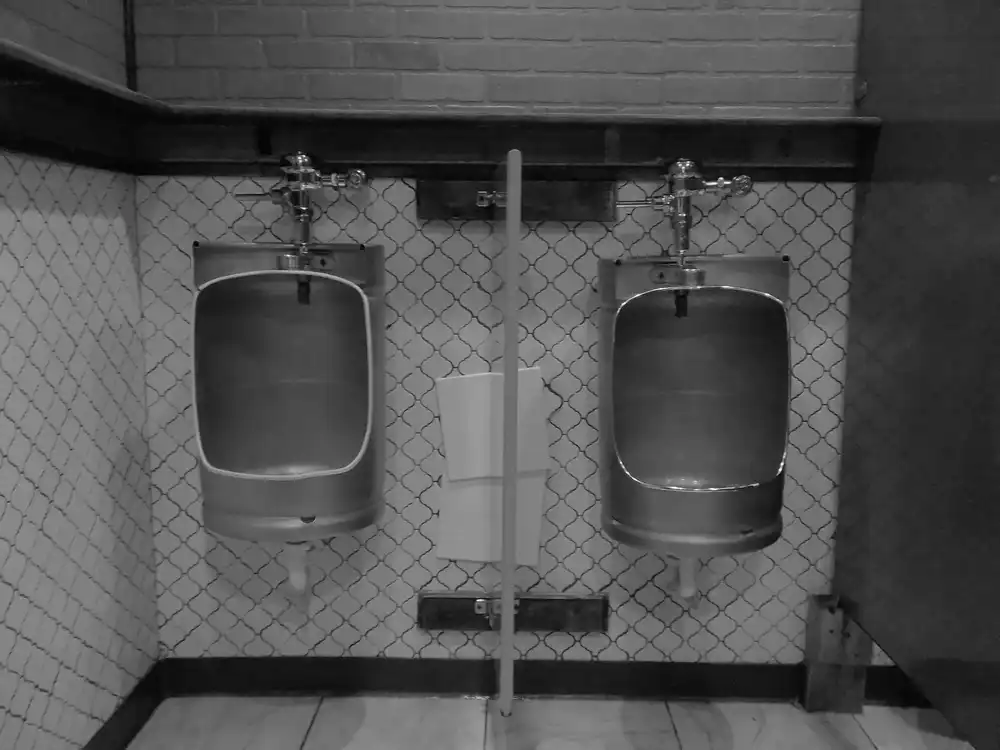
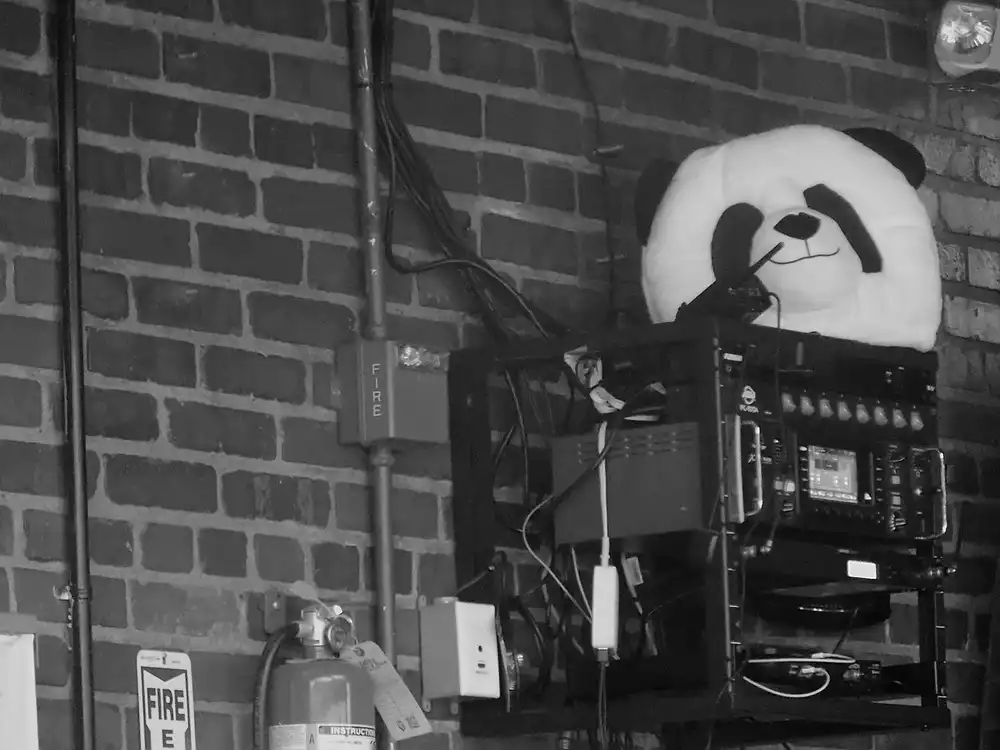
Visiting the Smithsonian Museums
The next day was our main adventure to the museums. My main focus was on the Smithsonian Museum of Natural History. On our walk over we made a quick stop at the National Museum of African Art, but I’ll circle back to this later.
Of course I enjoyed the natural history museum, though I should have guessed it would be one of the more popular (and crowded) locations. In many respects it was quite overwhelming and felt optimized for “quick hits” of info as opposed understanding context and comparison, most likely a result of a social media obsessed audience. Lately I’ve been carrying my Loop earbuds with me in my day bag, so I popped them in and was pleasantly surprised how it took just enough of the edge off for me to enjoy the rest of our visit.
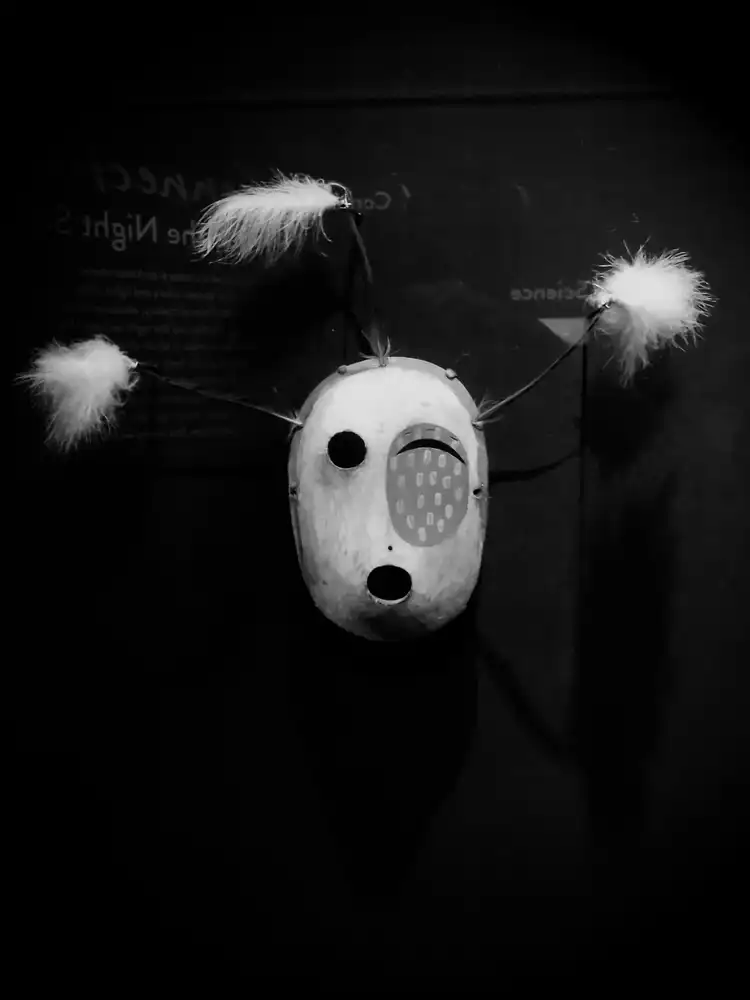
Given the crowds, one aspect of my time in this museum was simply watching people. This felt strangely appropriate in an anthropological sense given all of the exhibits on human evolution. At one point, I sat down to take a break and noticed a funny display of a chimpanzee holding a smart phone. Then it hit me, every single person in the entire room, including the people walking by, were all starting at their phones. …literally every last one of them, at least to 35-40.
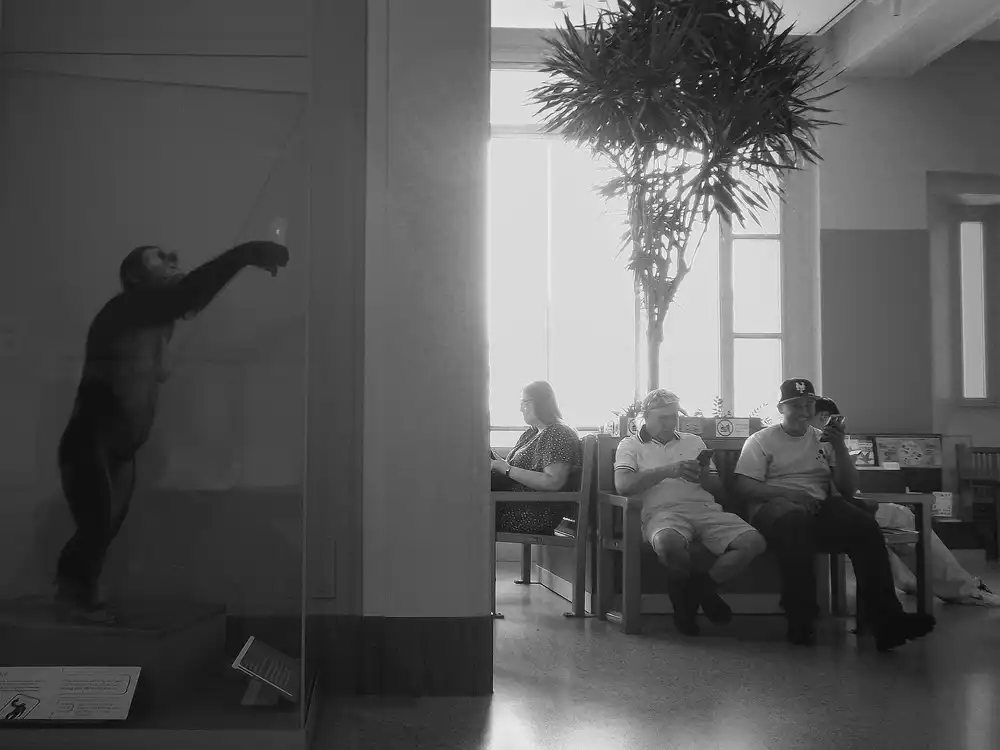
Later, during lunch, a couple sat down at the table next to us. The husband was rather upset and kept discussing (to paraphrase): “do you know how much this bag of chips cost?! It was $3.50, for this tiny bag of chips! I’m so tired of saying no to that, that I just bought it anyway.” He was rather distraught at the prices. Granted, it was not cheap to eat lunch there, but it left me with the following realization:
How often do we let a small thing get in the way and disrupt our enjoyment of the moment? Sure, lunch was expensive, but the museum was free. If I focus on my visit in its entirety I see what it cost me and what I got out of it: a full day of incredibly enjoyable entertainment and learning, with lunch, for myself and my wife. When viewed in this context it’s much easier to evaluate “was it worth it?” To me, it was, though I was also struck by how easy it would have been to let a measly $3.50 spoil my entire attitude like this other gentleman. I need to keep this example in the front of my mind more often.
After we had our fill of the Museum of Natural History, we wandered over to the Hirshhorn Museum and Sculpture Garden. It was far less crowded and rather quiet, making it the perfect afternoon completion to our museum day. At the end, I snagged some sun-sensitive photo paper from the museum store. I remember using some as a kid and had actually been thinking about it recently, so seeing it on the shelves felt like the final nudge to pick some up.
Four Talks by Laurie Anderson
Anderson worked ten-hour days at the Museum for more than two weeks to paint directly on the walls and floors of this large gallery, covering nearly every inch with stories, song lyrics, jokes and commentary on current event. Painting in a stream-of-consciousness manner without preparatory sketches, she created an enveloping and intensely personal installation that takes visitors on a journey through her mind. The installation’s title, Four Talks (2021), refers to the four sculptures—a raven, a parrot, a canoe, and a shelf—at its center, each accompanying by a pithy story or text passage.
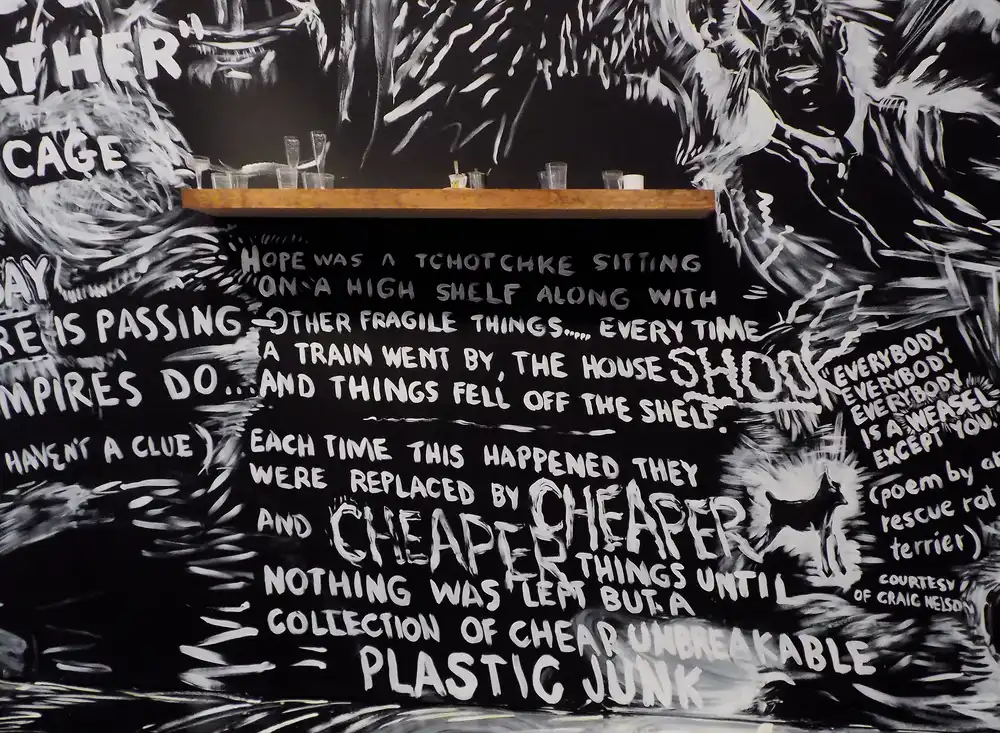
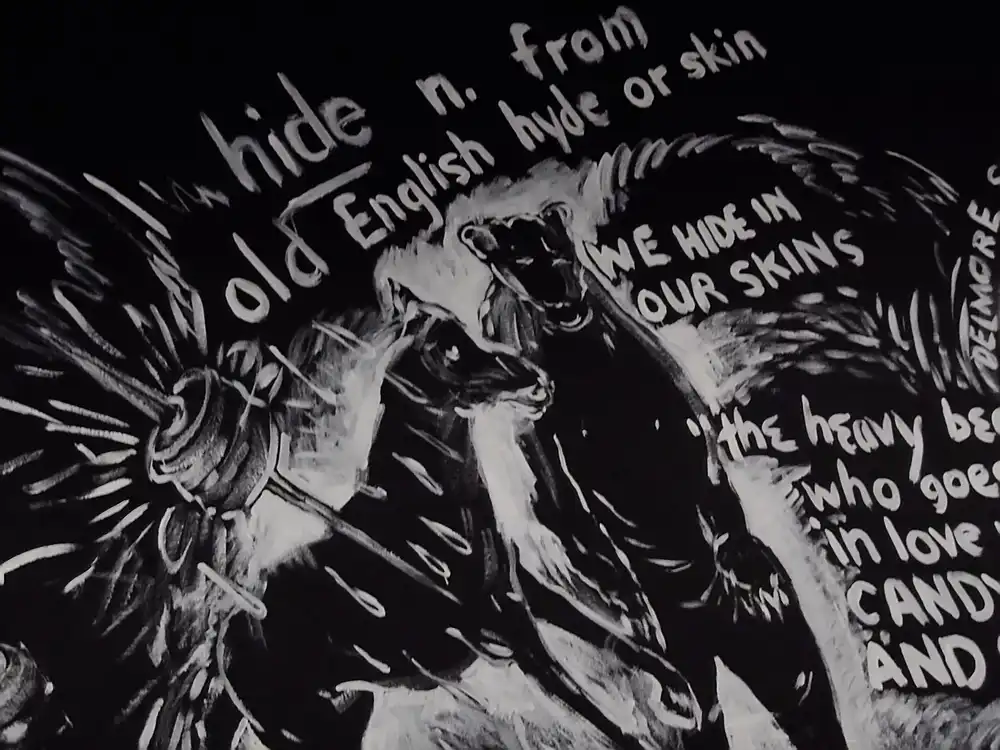

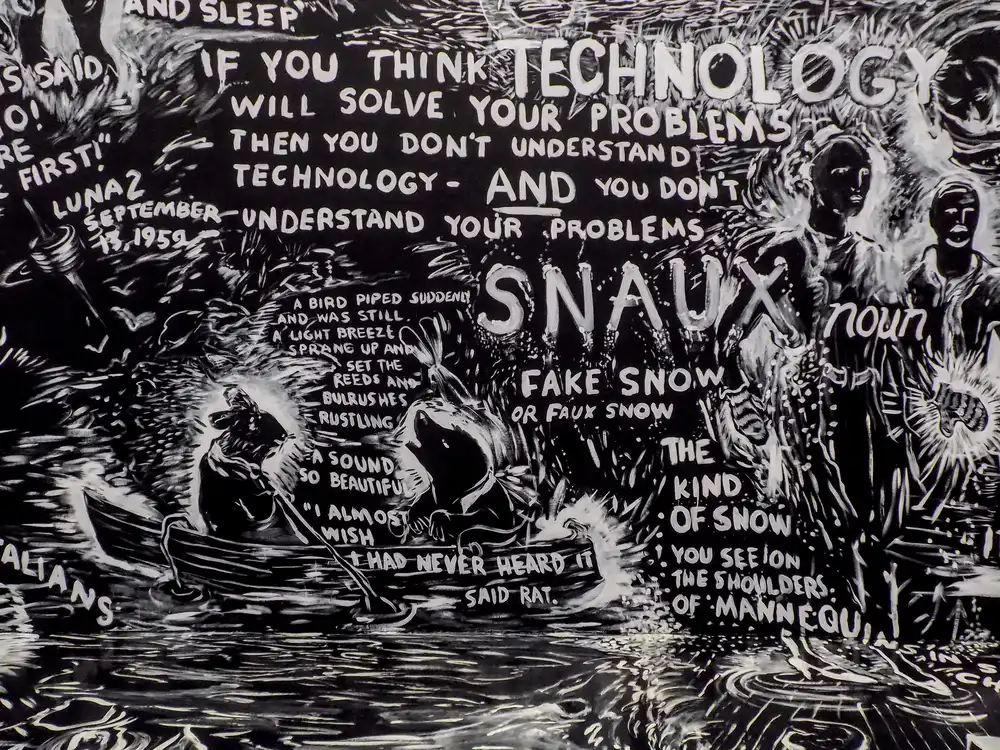
Endless Story by OSGEMOEOS
The Hirshhorn Museum will present the first US museum survey and largest US exhibition of work by identical twin brothers Gustavo and Otavio Pandolfo (b. São Paulo, Brazil, 1974), known globally as OSGEMEOS—Portuguese for “the twins.” The yearlong, full-floor presentation will bring together approximately 1,000 artworks, photographs, and archival materials to highlight the trajectory of their collaborative, multidisciplinary practice, including the roots of their fantastical artistic language inspired by their upbringing in urban Brazil. “OSGEMEOS: Endless Story” spotlights the artists’ playful combination of universal themes with magical elements drawn from their heritage, urban art and graffiti traditions, and shared imagination.
This exhibit wasn’t open quite yet, but they had a few samples painted directly on the walls just outside of the exhibit.
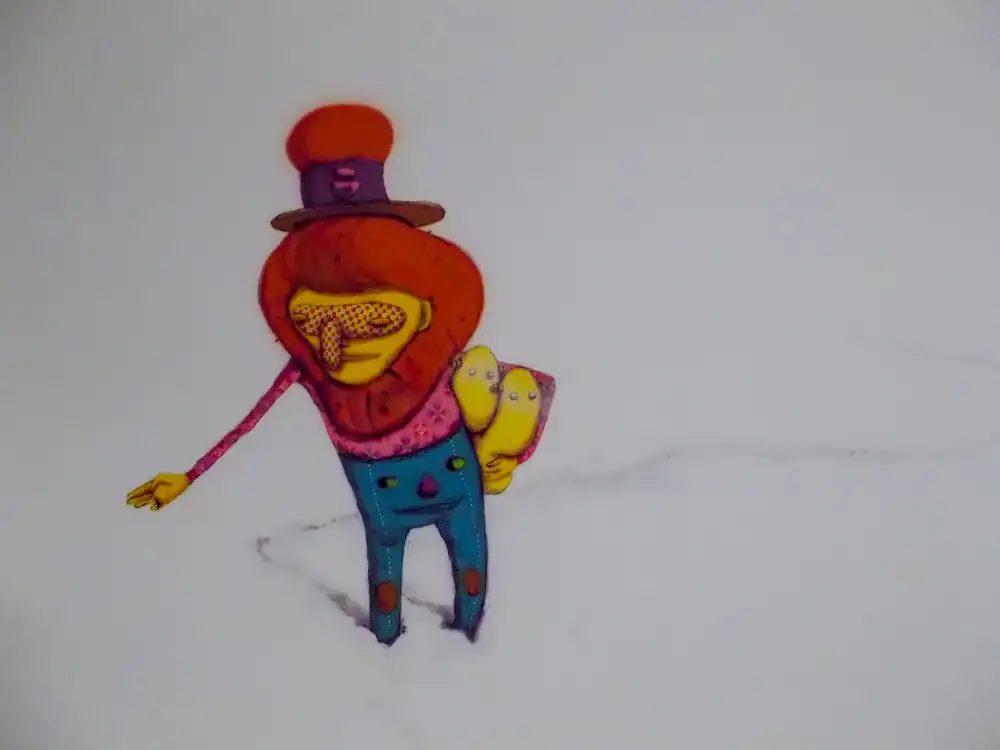
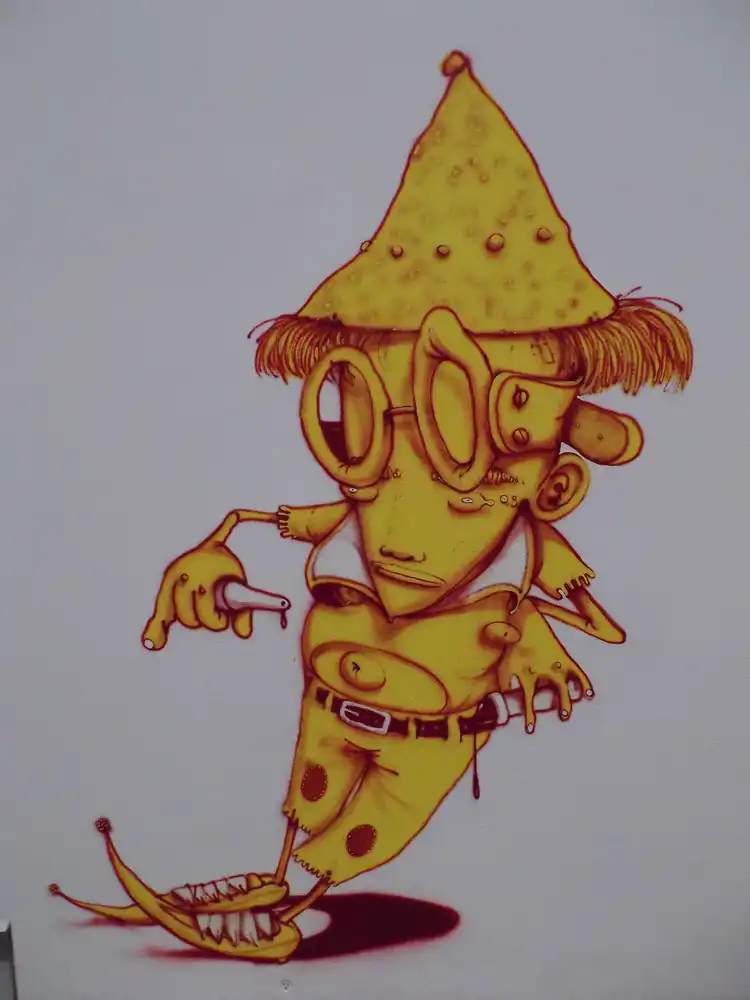
The next day, our train wasn’t scheduled to leave until 1:00 so we dropped off our suitcase with the hotel bell hop and walked back over to the National Museum of African Art. We had been really impacted the previous day by our quick stop and wanted to come back to spend a little bit more time since our previous and unplanned short stop hadn’t done it justice.
We Are All Green by Elias Sime
Buttons, flip-flops, mud, plastic bags, thread, wires, and motherboards intersect, weave, and ultimately are transformed in the hands of Ethiopia’s Elias Sime. Internationally acclaimed for his artworks made of reclaimed electrical wires and components, Sime recognizes the intersecting forces of human and nonhuman entities and the memories embodied in each material from every time it has been touched, moved, or altered. Sime picks up discarded things—not to clean up or because he does not have access to paint or other materials, but to connect with both the material itself and all who have been in contact with it before. New and old, everything carries fingerprints.
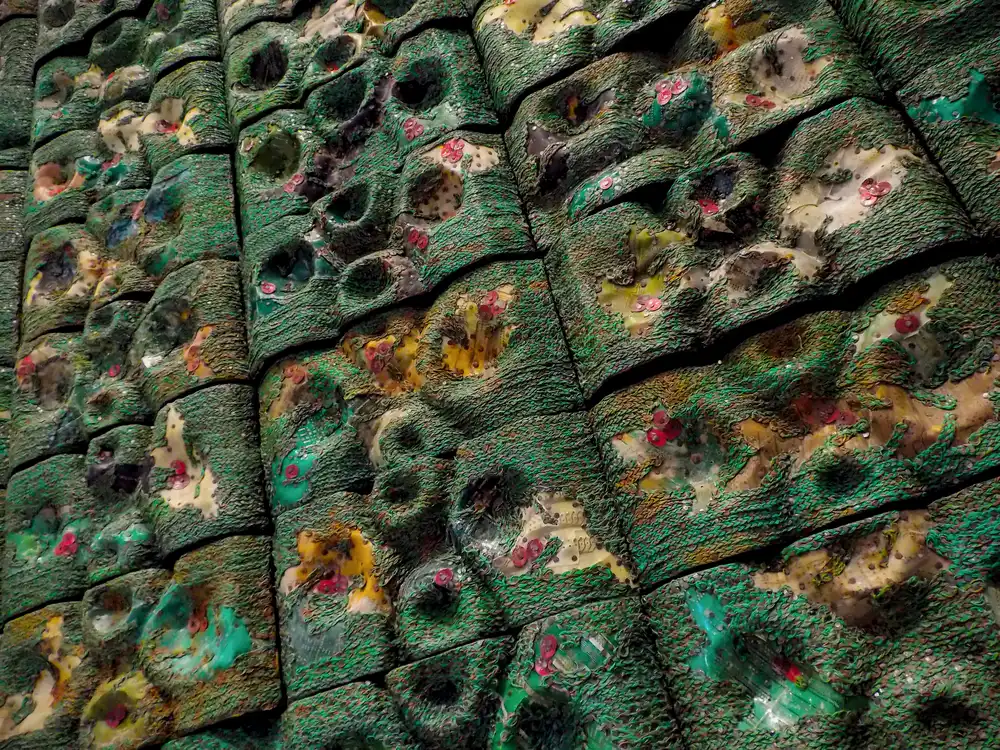
The only thing I think about when I pick up a cellular phone motherboard … is the excitement of the person who owned it the first time they got it, the hope they felt about the future, the eagerness to use it. That for me is what love is all about, to realize that we are all connected and that human contact, that touch, is created in every object we take for granted.
Elias Sime
From the Deep: In the Wake of Drexciya
In the early 1990s, Drexciya, a Detroit-based techno duo made up of James Stinson and Gerald Donald, imagined an underwater kingdom populated by the children of pregnant women who had been thrown overboard or jumped voluntarily into the ocean during the transatlantic slave trade.
Drexciya’s founding myth has inspired numerous artists, among them Ayana V. Jackson who, in this exhibition, brings to life an immersive, feminist, and sacred aquatopia where African water spirits from Senegal to South Africa both midwife and protect the Drexciyans. Jackson asks that we reckon with the brutal history that cast these beings to the sea while simultaneously envisioning a world of powerful, resilient women. By using her own body to convey her message, Jackson actively engages in what it might have meant to be among the estimated two million captives who never made it to shore. What do you imagine the Drexciyans see looking back at us?
From the Deep was incredibly powerful and moving. I didn’t take any photographs to share since I was too engrossed in the exhibit and just focused on experiencing the moment. The title of one piece did particularly impact me, so I made a quick note of it:
The Self-Forgetfulness of Belonging Will Never Be Mine
Ayana V. Jackson
Five Murmurations
Five Murmurations is London-based, Ghanaian-born artist John Akomfrah’s response to the global pandemic, murder of George Floyd, and worldwide protests in support of Black Lives Matter. It is a visual essay of our current times.
Five Murmurations was another impactful display. We sat in silence watching the images and words on the screen, listening to the soundscape and audio clips from various events, including the police audio from the murder of George Floyd, and feeling a bit disoriented by the surrealism present in actual real-life events.
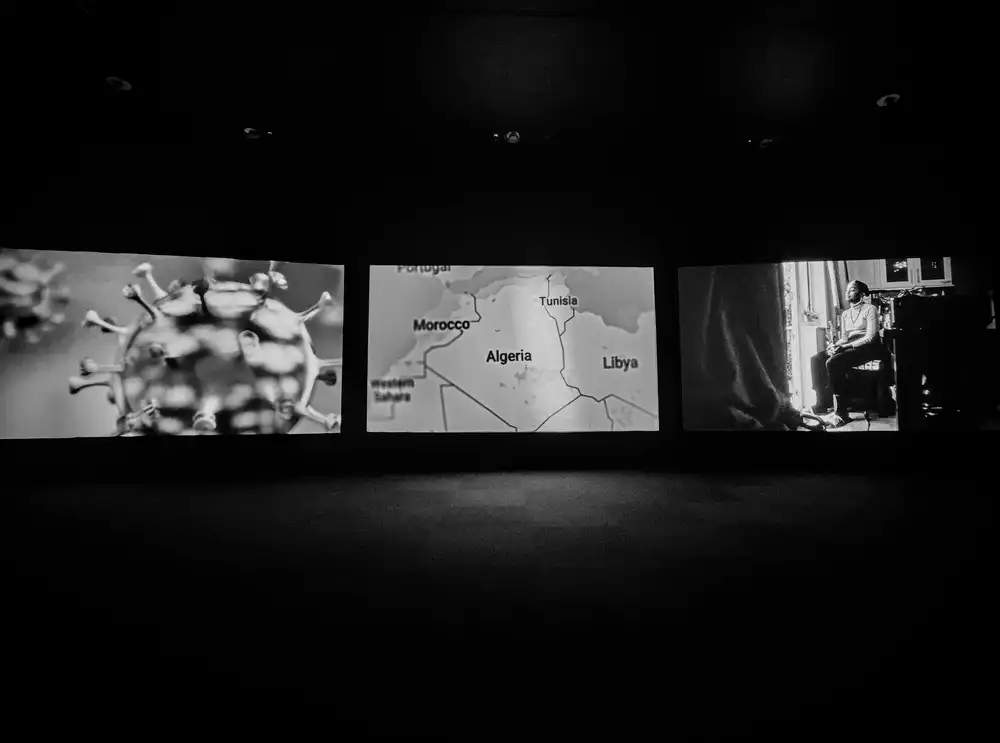
Visionary: Viewpoints on Africa’s Arts
We concluded our visit in one final exhibit outlining Africa’s Arts. There was a broad collection of modern and older art in many varying styles. It felt like the perfect cap to our visit.
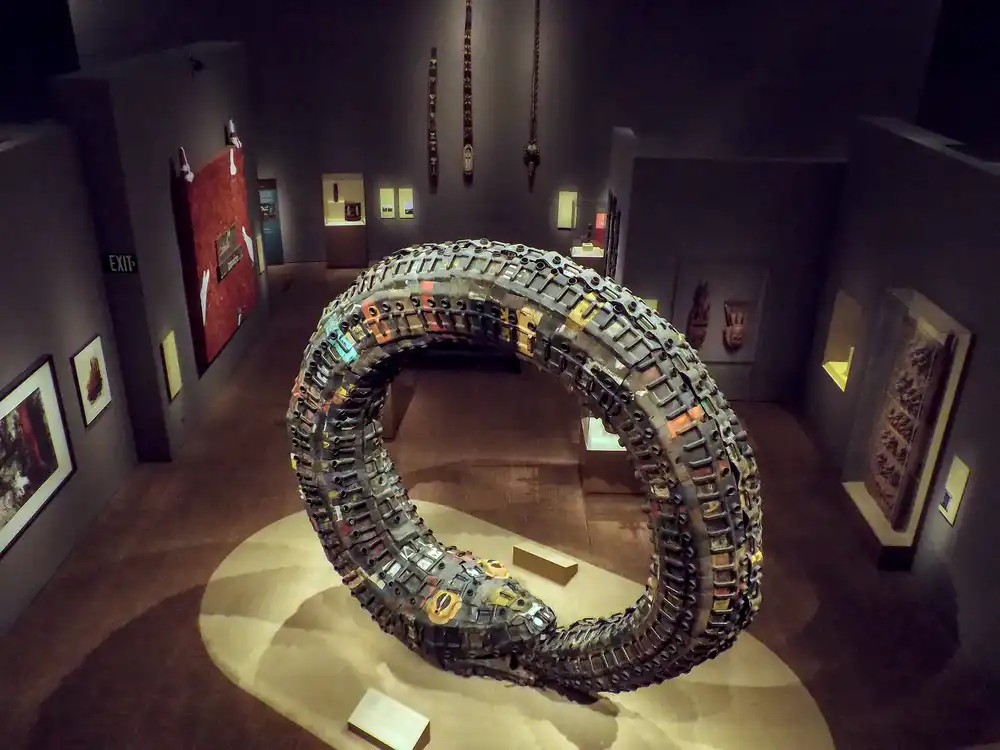
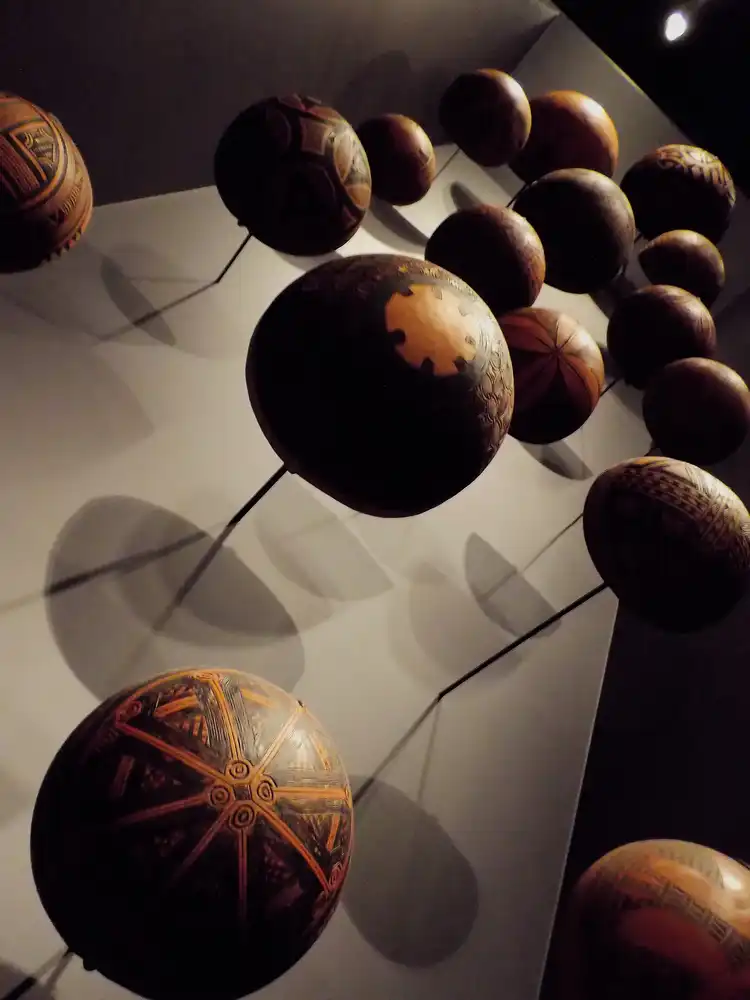
On the way out I checked in at the museum store, hoping they would have a DVD or Blu-ray of some of the visual multi-media art on display, but no such luck. I did find two books I picked up, though:
- Vegan Africa: Over 70 Plant-Based Recipes from Ethiopia to Senegal – page after page of absolutely amazing sounding recipes.
- Book of African Proverbs – Each page I previewed had sayings and wisdom that really resonated with me.
The Ride Home
The ride home was just the ride down but in reverse and went similarly as smooth. Again, I was able to do much reading, this time bouncing between my Kindle and the new African proverbs book I had just purchased. One of the initial entries seemed to sum up this trip so well and provides a reminder to not be sucked into day to day life, so I’ll end this post with it:
In the West they have watches, but we have the time.
African Proverb
Leave a Reply